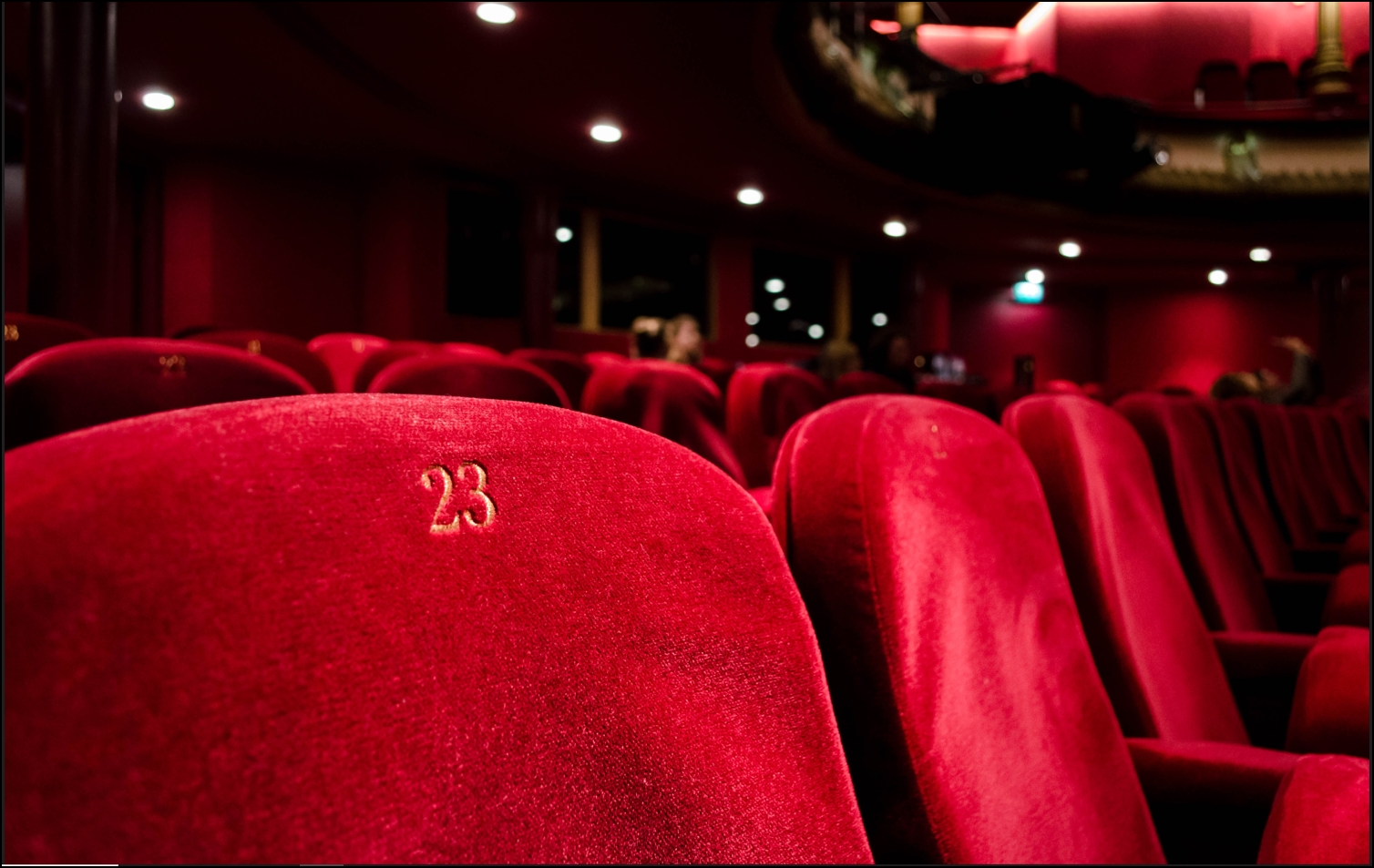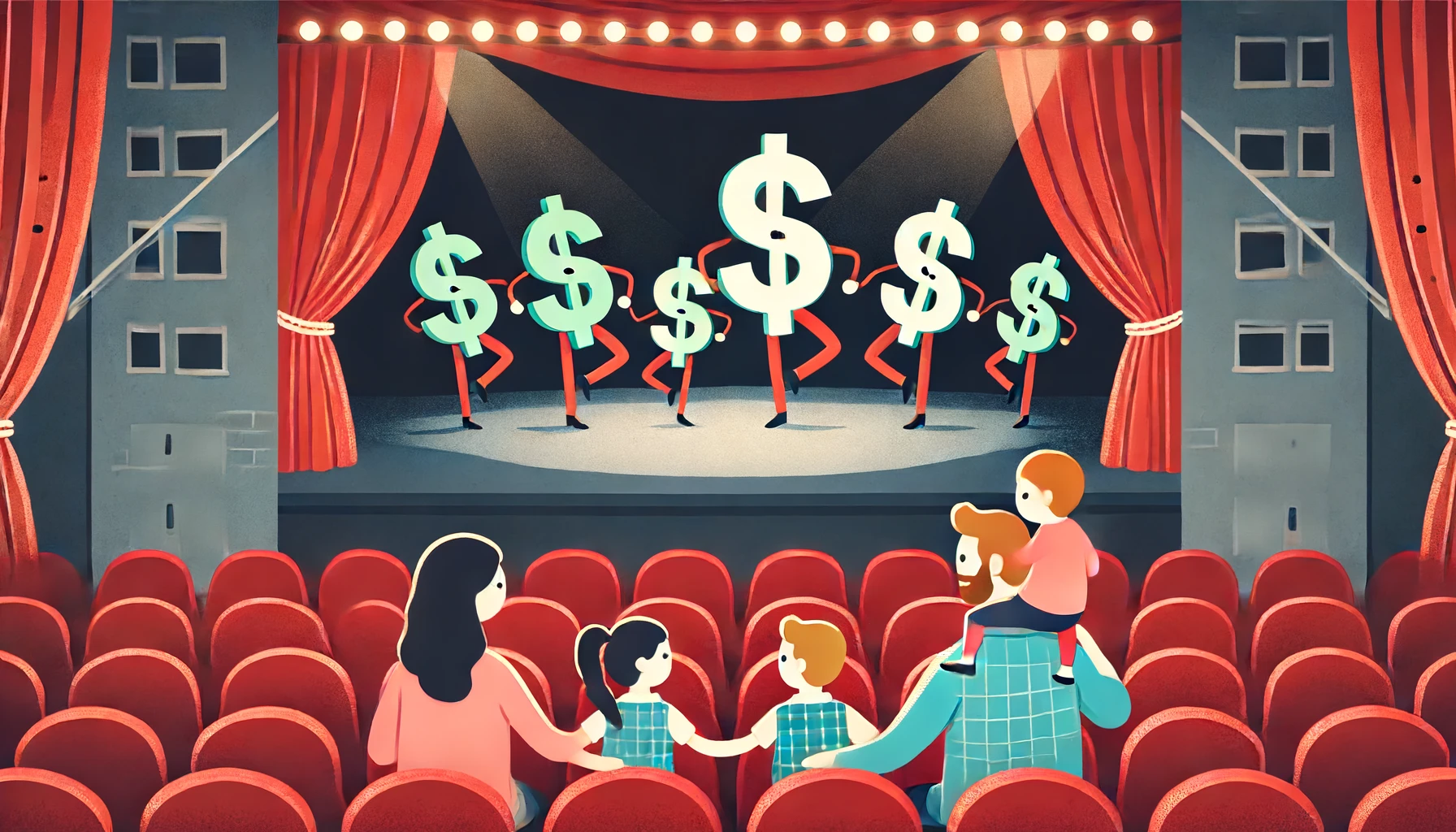By Kris Neely
 I’ve observed a troubling trend in the pricing of tickets for many local, regional, and touring theater productions.
I’ve observed a troubling trend in the pricing of tickets for many local, regional, and touring theater productions.
Despite the magic of live theater, the rising cost of admission raises questions about accessibility and sustainability for the average American – long the backbone of local and regional theater in this country.
Rising Ticket Prices
Over the past two decades, ticket prices for regional and touring theater productions have increased significantly. In the early 2000s, one could expect to pay around $25-$35 for a regional theater ticket.
Today, it’s common to see prices ranging from $45 to $60 and up, even, sad to say, at the local level. On the other hand, and not to be unexpected (but still!), tickets for popular touring shows like “Hamilton” can range from $138.26 to over $1,600, depending on the seating and venue (TicketSmarter).
” … People remember ‘events’ such as going to the theater … “
At the San Francisco Opera, the price for a most favored seat exceeds $440 for some productions. Now, I get that Opera is a horse of a different theatrical color, but you see my point relative to the cost of a single seat.
American Theatre magazine adds these notes: “Nearly all (theater) artistic and managing directors polled saw their company’s price increases as “marginal.”
But, for many Americans, an increase of a few dollars per ticket can be significant, especially when piled on top of every other rising cost for goods and services. The New York Times raised an alarm about similar trends when it recently asked its readers if a $5 entrance fee increase for the city’s art museums meant that these museums were only “for the wealthy.”
Even more affordable balcony seats in many theaters are priced at $35-$55, reflecting a substantial increase over the years (TicketSmarter).
Declining Audience Numbers
Parallel to the rising ticket prices, theater attendance has declined. According to data from the Theater Communications Group, annual productions in regional theaters dropped from 14,000-25,000 in the early 2000s to significantly fewer in recent years, with indisputable evidence that audience numbers are dwindling.
American Theatre magazine again, “Piling onto … the economic reality is the difficulty that theatres have had in getting paying audiences to return at pre-pandemic levels. Survey respondents’ companies mirrored national trends that have shown up in other reports: 47% said their overall attendance was down between 10% and 30%, while an additional 27% reported seeing an even more drastic decrease.
(To be fair…) not all companies are doing poorly: The survey found that 13% of respondents said their attendance numbers have stayed put, and another 13% said overall numbers have increased by 10% or more.”
Fair enough — but that still leaves the other 70+% of theaters. So, it doesn’t take an AI tool to see fewer people willing - or able- to pay higher prices for live theater experiences.
Economic Factors
Several economic factors contribute to this issue. The production costs, including set design, costumes, rights, and talent (for those theaters that pay their actors), have all increased. Additionally, theaters have faced higher operational costs, such as rent and utilities, which they often pass on to consumers through higher ticket prices.
While these increased costs are understandable, they add to the unaffordability of live theater and, by extension, are additive to a barrier for many potential audience members, particularly those from lower-middle-income households.
The Impact on Accessibility
The steep prices discussed here limit accessibility, making theater an elitist experience rather than a communal one. This exclusion not only reduces the diversity of theater audiences but significantly, also impacts the cultural enrichment of the community.
Live theater should be an inclusive art form accessible to people from all levels of society. Fine idea. Except, current ticket pricing suggests other truths.
The Cost of a Theater Outing
Let’s sit down at the kitchen table and do some back-of-the-envelope math.
We’ll break down, as an imaginary example, the “real” cost for a family of five (2 adults, two children (and a no-charge toddler, to save the cost of a babysitter) attending a regional theater production. Again, we’ll assume the toddler’s cost is negligible in this example:
- Tickets:
- Average price per adult ticket: $50
- Average price per child ticket: $30
- Total for four tickets: (2 x $50) + (2 x $30) = $160
- Parking:
- Average cost for parking near a theater: $15
- Dinner (Burger King):
- Average cost for a modest meal for the family: $50
- Snacks at the Theater:
- Average cost for a drink: $5
- Average cost for popcorn: $6
- Total for snacks (4 drinks and four popcorn): (4 x $5) + (4 x $6) = $44
Total cost for a night out at the theater: $160 (tickets) + $15 (parking) + $30 (dinner) + $44 (snacks) = $249.
One night, one show. Two hundred and forty-nine dollars.
Read that price again — if you can take it. And soon this family will have to add that fifth mouth and ticket to this calculus.
Possible Solutions
To address this issue, theaters, and production companies must explore alternative funding models. Increased sponsorship, government grants, and community partnerships can subsidize ticket prices, making them more affordable.
On the other hand, theaters, especially community and regional, may have to hold back on bringing the latest, for example, Disney-inspired fare to the stage. The rights to these offerings can, and often are, pejorative to that end of the theater marketplace.
I get the allure of bringing the latest word in the playwright’s art to the stage, especially for the children and teens who get to enjoy the rush of producing and acting in the same. But not at the expense of pushing a theatrical company into reducing the number of shows it wants to deliver in a season. America needs more cost-effective theater experiences, not less.
Finally, theaters could offer more discounted performances, pay-what-you-can nights, and targeted outreach to underrepresented communities. I also get the argument that these approaches may bring in fewer dollars per performance. But I contend that once people see quality theater — at affordable prices – and enjoy a pleasant theatrical experience at the same time, they will at least consider getting out of the house to create another family memory.
People remember ‘events’ such as going to the theater. Many folks are hard-pressed to remember what they watched on TV a month ago. A week ago. Last night?
“There’s trouble in River City, Folks.”
Net-net, while the allure of live theater remains strong, the rising cost of tickets threatens its accessibility and sustainability at many levels, especially at the community and regional levels.
To preserve our art’s cultural and communal benefits, every theater must find ways to make attendance more affordable for the average American.
Otherwise, we risk further alienating a sizable portion of potential audiences and diminishing the rich, diverse tapestry, history, education, memory-making, and enjoyment that theater offers.
Thank you for your attention.
Lights up!
-30-

Mr. Kris Neely is the owner, founder, and Editor-in-Chief of Aisle Seat Review.


